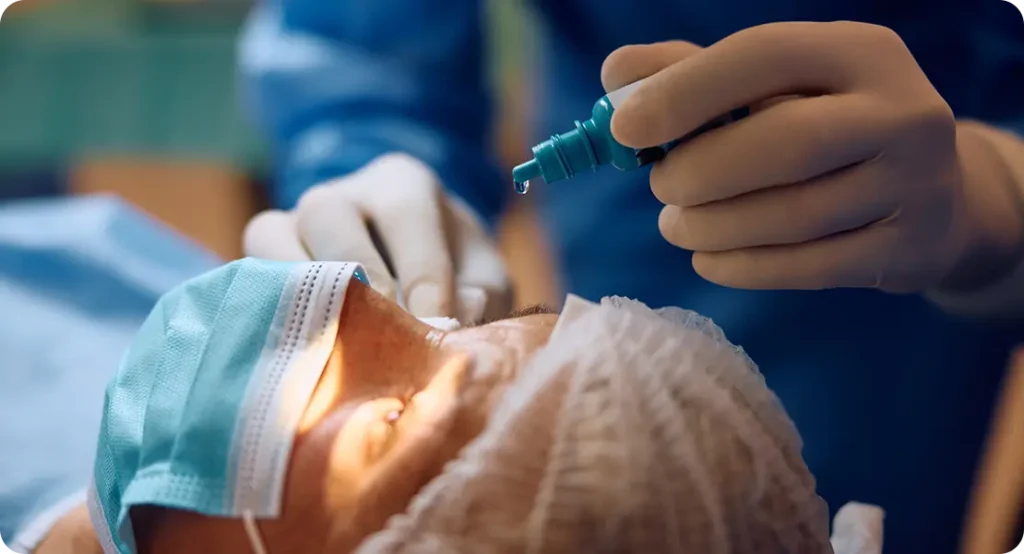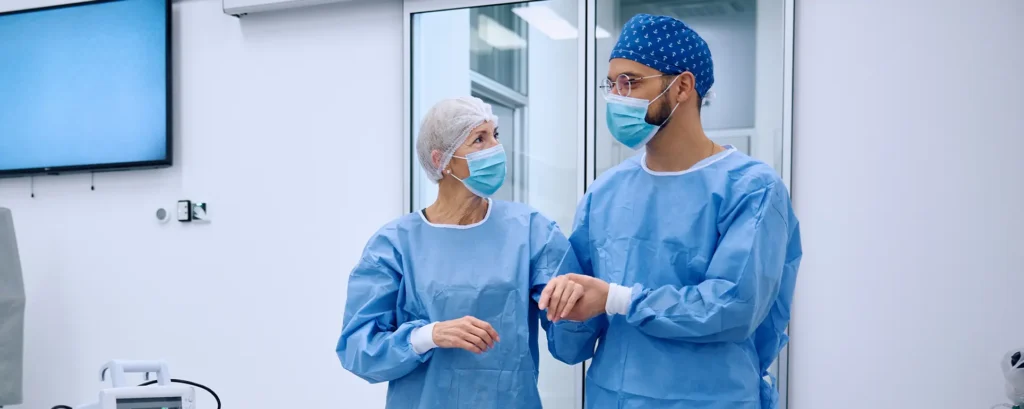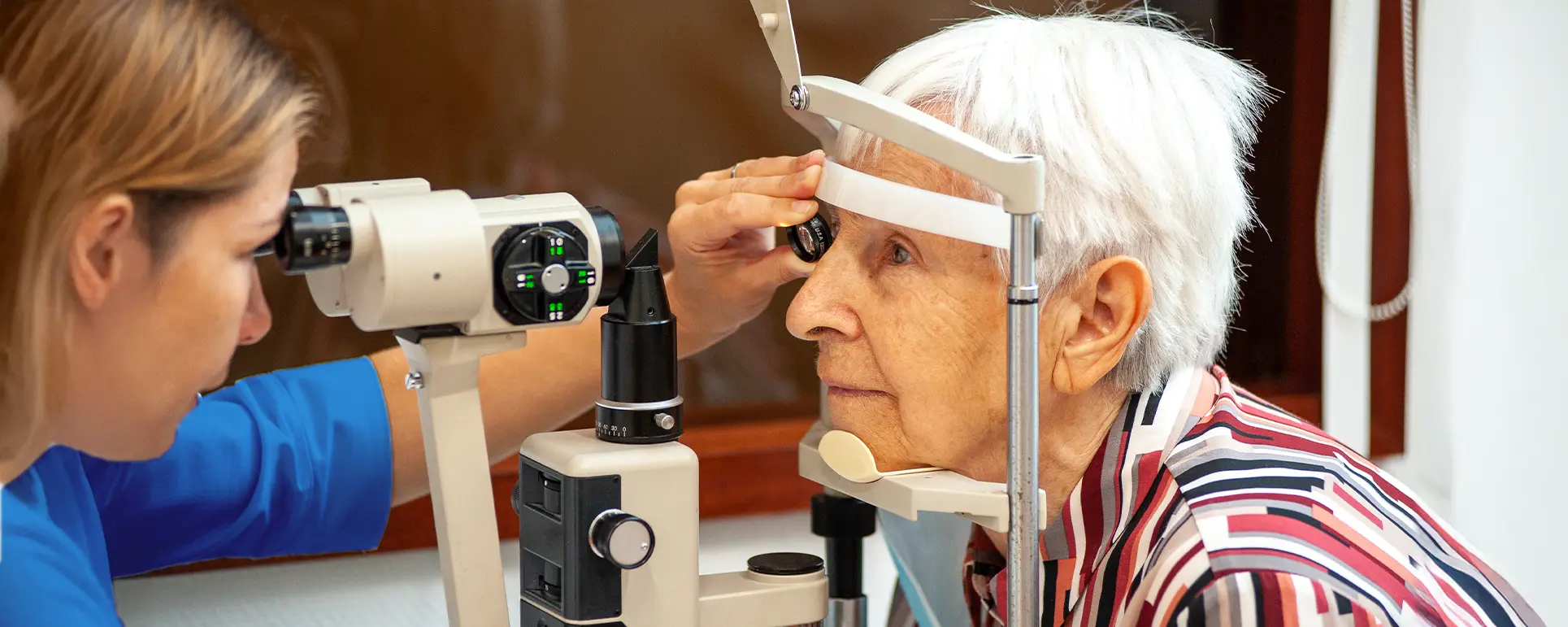If you’re in your nineties or supporting someone who is, you might wonder: “Is cataract surgery still worth it at this age?” It’s a valid question—and one that’s being asked more frequently as people live longer, healthier lives. Traditionally, there’s been a quiet assumption that very old age somehow disqualifies people from certain surgical interventions. But is that really true when it comes to cataracts?
In this article, we’ll explore the latest evidence on how people aged 90 and above respond to cataract surgery. We’ll look at the real benefits, the risks you should be aware of, and the question of whether someone can ever be “too old” to have their vision improved.
Cataracts in the Very Elderly: A Growing Concern
Cataracts are almost inevitable with age. By the time someone reaches 90, the likelihood that they’ve developed significant lens opacity is extremely high. And while some may adapt to dim or cloudy vision, many find it severely interferes with their independence—particularly when it comes to walking, cooking, or reading.
In fact, declining vision in the very elderly is one of the major reasons for loss of autonomy. Cataracts can increase fall risk, reduce social interaction, and even worsen cognitive symptoms in those with early dementia. So the need for intervention doesn’t just vanish with age—it often becomes more urgent.
What’s changed in recent years is that more people are not only reaching their nineties but doing so in relatively good health. With improvements in anaesthesia, surgical technique, and post-op care, age alone is no longer seen as a barrier to intervention.
What the Research Says: Are Outcomes Still Good After 90?
Several recent studies have looked at the outcomes of cataract surgery in patients over 90, and the results are encouraging.
Visual improvement is still the norm—even in this age group. A large retrospective study published in Ophthalmology showed that patients over 90 still experienced significant improvements in best-corrected visual acuity. On average, their post-op vision improved enough to resume everyday tasks, such as reading or recognising faces across the room.
Another key finding is that complication rates, although slightly higher than in younger adults, remain within acceptable margins. The rate of posterior capsule rupture, for example, was marginally elevated but didn’t lead to worse outcomes in the majority of cases.
What’s more, patient-reported outcome measures (PROMs) consistently show that older patients often feel their quality of life improves markedly after surgery. They’re more confident walking, less likely to trip, and feel more engaged with the world around them.
Common Concerns in Nonagenarians and Beyond
Despite the promising results, there are valid reasons for caution. The very elderly have unique physiological challenges that can influence surgical outcomes:
- Systemic Comorbidities
Patients over 90 are more likely to have chronic conditions such as heart disease, diabetes, or Parkinson’s, which can complicate surgery or recovery. However, cataract surgery is usually performed under local anaesthesia with minimal systemic impact. Preoperative medical clearance is crucial, but in most cases, these conditions don’t pose a major roadblock. - Cognitive Impairment
Mild cognitive impairment or even early-stage dementia doesn’t automatically exclude someone from surgery. In fact, improving vision might help reduce disorientation or agitation. However, these patients may need additional support understanding post-op instructions or managing eye drops. - Mobility and Positioning Issues
Being able to lie still during the procedure is essential. Some very elderly patients may struggle with back or neck pain that makes this challenging. Special positioning cushions or shorter surgery times can help overcome this barrier. - Ocular Comorbidities
Other eye conditions such as macular degeneration, glaucoma, or corneal disease may limit how much vision can be improved. In such cases, the surgeon will assess whether the cataract is still a major contributor to visual loss—and whether removing it will have any meaningful effect.
Realistic Expectations vs Age Bias
It’s important to balance optimism with realism. While the elderly can and do benefit from cataract surgery, the expectations must be tailored to the individual’s health status and overall visual potential. Ageism in medical decision-making is still a problem—some clinicians may not even offer surgery to a 95-year-old because they assume it won’t be “worth it.” But research suggests this assumption is outdated.
Instead, decisions should be made based on functional status, the degree of visual disability, and patient preference—not the birth year on a chart.
Is Anaesthesia Risk a Dealbreaker?

A common concern is whether someone over 90 can safely undergo any kind of surgery, even one under local anaesthesia. The good news is that most cataract procedures use topical anaesthesia or a sub-Tenon’s block, both of which carry a very low systemic risk.
Still, there are rare cases where complications such as a vasovagal response or cardiovascular event can occur. That’s why preoperative assessment is critical. A multidisciplinary approach involving the GP, ophthalmologist, and sometimes a geriatrician is often the safest route forward.
Quality of Life: The True Measure of Success
The real test of whether cataract surgery “works” in the elderly isn’t just the chart showing improved acuity—it’s the patient being able to walk without falling, eat without spilling, and feel connected to loved ones. Vision is deeply tied to dignity, independence, and mental health.
Several studies have documented improved mobility and fewer reported falls after surgery in people aged 85 and above. Others show reduced symptoms of depression, especially in patients who were previously isolated by poor sight.
So while a 92-year-old might not gain 20/20 vision, regaining just enough sight to confidently get around the house or see expressions on a grandchild’s face can be transformative.
Barriers to Access: Why Aren’t More Elderly Patients Getting Surgery?
Despite the potential benefits, uptake remains lower in the 90+ population. Common barriers include:
- Assumptions by family or healthcare providers that surgery isn’t worthwhile.
- Transport difficulties for multiple pre- and post-op appointments.
- Fear of surgery or misunderstanding what it entails.
- Limited access to geriatric-focused eye clinics.
Public education campaigns and better GP awareness can help change this. Mobile eye units and streamlined surgical pathways for the elderly could also remove practical barriers to care.
When Is It Not Appropriate?
There are cases where surgery may not be recommended:
- Advanced frailty, where recovery could be burdensome.
- Terminal illness, when improving vision won’t meaningfully improve quality of life.
- Severe cognitive decline, where cooperation during and after surgery is unmanageable.
These decisions should always be individualised, with honest conversations between clinicians, patients, and families. The goal is to maximise benefit, not just extend intervention.
Technology Tailored to the Elderly

Modern innovations have helped make surgery even more accessible and safe for older patients. Examples include:
- Femtosecond laser-assisted cataract surgery (FLACS): Offers greater precision, though more expensive.
- Multifocal and extended depth of focus (EDOF) lenses: Not always suitable for older adults due to contrast sensitivity, but low-powered monofocals are often ideal.
- Micro-incision techniques: Reduce surgical time and improve healing.
Newer intraocular lens (IOL) designs are also being tested with the specific needs of elderly patients in mind—such as reducing glare and improving contrast in low-light conditions.
Psychological and Social Impact
One overlooked benefit of cataract surgery in the very elderly is its psychosocial effect. After regaining vision, many older adults report feeling “more alive” and “less invisible.” For people in their 90s, this can be deeply meaningful. Being able to see facial expressions, TV, books, or art can reignite a sense of joy and engagement that had dimmed over time.
Even a minor improvement in sight can reduce the need for home care, delay a move into assisted living, and improve family interactions.
Role of Family and Carers in Decision-Making
When someone is in their 90s, decisions around medical procedures like cataract surgery often involve close family members or carers. Their role can be supportive or, at times, unintentionally obstructive. In some cases, families may assume surgery is too risky or unnecessary, especially if the person is already in a care setting. However, unless a patient lacks capacity, it’s their own wishes that should drive the conversation. Where cognitive issues are present, families should work collaboratively with clinicians to evaluate whether improved vision would positively impact quality of life. Sometimes, the person in question might be hesitant or unsure—and that’s where clear, compassionate explanation from both loved ones and the surgical team becomes invaluable. Being able to see better might help a loved one recognise faces again, read their favourite books, or simply feel safer moving around—benefits that families may not initially realise are achievable. So, involving them in a balanced, well-informed dialogue can make a big difference in reaching the right decision.
The Future of Cataract Care in the Very Elderly
As the population continues to age, eye care services are adapting to better serve patients in their 90s and beyond. Several hospitals and clinics now offer “fast-track” pathways for the elderly, minimising the number of hospital visits by combining pre-assessments, surgery, and follow-up into a streamlined process. There’s also growing interest in the development of portable diagnostic tools, allowing assessments to take place in care homes or via community services—especially for those with limited mobility. Teleophthalmology is another avenue being explored, using video calls for post-op reviews or initial consultations. On the surgical side, research is increasingly focused on techniques and lens types that suit the physiological needs of the very old—such as IOLs designed to maximise contrast sensitivity rather than reading range. With these innovations and more clinicians challenging outdated ageist assumptions, the future looks promising for 90+ year olds seeking clearer vision. Age, it seems, is no longer a disqualifier—just a factor to thoughtfully manage.
FAQs
- Can someone in their 90s really benefit from cataract surgery?
Yes, many individuals in their 90s report noticeable improvements in vision, mobility, and overall independence after cataract surgery, with research consistently showing that the benefits in quality of life often outweigh the modest increase in surgical risk associated with advanced age. - Is there more risk for complications at that age?
While people over 90 may have slightly higher chances of minor complications like delayed healing or capsule rupture, modern cataract surgery is low-risk overall, and the vast majority of patients recover well with proper preoperative planning and postoperative care. - What if my parent has mild dementia—can they still have surgery?
Mild dementia isn’t usually a barrier to cataract surgery, especially if the person can cooperate during the procedure and follow-up; in fact, improving vision may help reduce confusion and improve engagement with their environment. - Does cataract surgery take longer for older patients?
The actual surgical time is usually the same regardless of age, although extra time may be taken for positioning or stabilising the patient if they have mobility limitations or other medical needs. - Is general anaesthesia used for people over 90?
General anaesthesia is rarely necessary in cataract surgery, even in the very elderly, as the procedure is almost always done with local anaesthetic drops or an injection around the eye, minimising risk and avoiding sedation. - Will my vision return to normal after surgery?
That depends on your overall eye health, but many nonagenarians do experience marked visual improvement, even if perfect vision isn’t restored, especially when cataracts were the main cause of visual decline. - How long is the recovery time for someone in their 90s?
Recovery generally follows the same timeline as for younger adults—usually within a few weeks—with slightly increased caution needed for preventing infections and monitoring healing due to age-related tissue changes. - Is it worth it if I only have a few more years to live?
If your vision is significantly affecting your ability to enjoy life or carry out daily activities, then even a few years of improved sight and autonomy can make a meaningful difference to your wellbeing. - How can I prepare an elderly loved one for surgery?
Help them understand what to expect, ensure they attend all appointments, and support them in managing post-op eye drops and hygiene; even just providing transport and reassurance can make the process smoother. - What if they can’t lie flat during surgery?
Surgeons are usually very flexible with patient positioning and can use adjustable chairs, cushions, and even perform the procedure at a slight angle to accommodate spinal stiffness or breathing issues common in older adults.
Final Thoughts: Is There Really an Upper Limit?
So, is there a hard age limit where cataract surgery no longer helps? Based on the data, the answer is no. There’s no magic number that rules someone out. A healthy 95-year-old may benefit more than a frail 80-year-old, depending on the context.
The decision to operate should be based on the person’s goals, quality of life, overall health, and the realistic expectations for vision improvement—not their age alone.
At the London Cataract Centre, we’re seeing more people in their nineties choose cataract surgery—and we support them every step of the way. With the right assessment and thoughtful care, age is just a number when it comes to clearer vision.
References
- Li, E., Margo, C.E. & Greenberg, P.B., 2018. Cataract surgery outcomes in the very elderly. Journal of Cataract & Refractive Surgery, 44(9), pp.1144–1149. Available at: https://pubmed.ncbi.nlm.nih.gov/30055955/
- Mutoh, T., Isome, S., Matsumoto, Y. & Chikuda, M., 2012. Cataract surgery in patients older than 90 years of age. Canadian Journal of Ophthalmology, 47(2), pp.140–144. Available at: https://pubmed.ncbi.nlm.nih.gov/22560418/
- Borazan, M., 2013. Results of cataract surgery in the very elderly population. Clinical Interventions in Aging, 8, pp.1041–1046. Available at: https://www.academia.edu/87430506/Cataract_surgery_outcomes_in_the_very_elderly
- Rosen, E., Rubowitz, A. & Assia, E.I., 2009. Visual outcome following cataract extraction in patients aged 90 years and older. Eye, 23(6), pp.1120–1124. Available at: https://www.researchgate.net/publication/258953676_Clinical_Outcomes_of_Cataract_Surgery_in_Very_Elderly_Adults
- Michalska-Małecka, K. et al., 2020. Clinical outcome and risk factors for posterior capsule rupture and visual acuity loss following cataract surgery in patients aged 90 years and older. Eye, 33(6), pp.1161–1170. Available at: https://www.mdpi.com/2077-0383/10/20/4658

